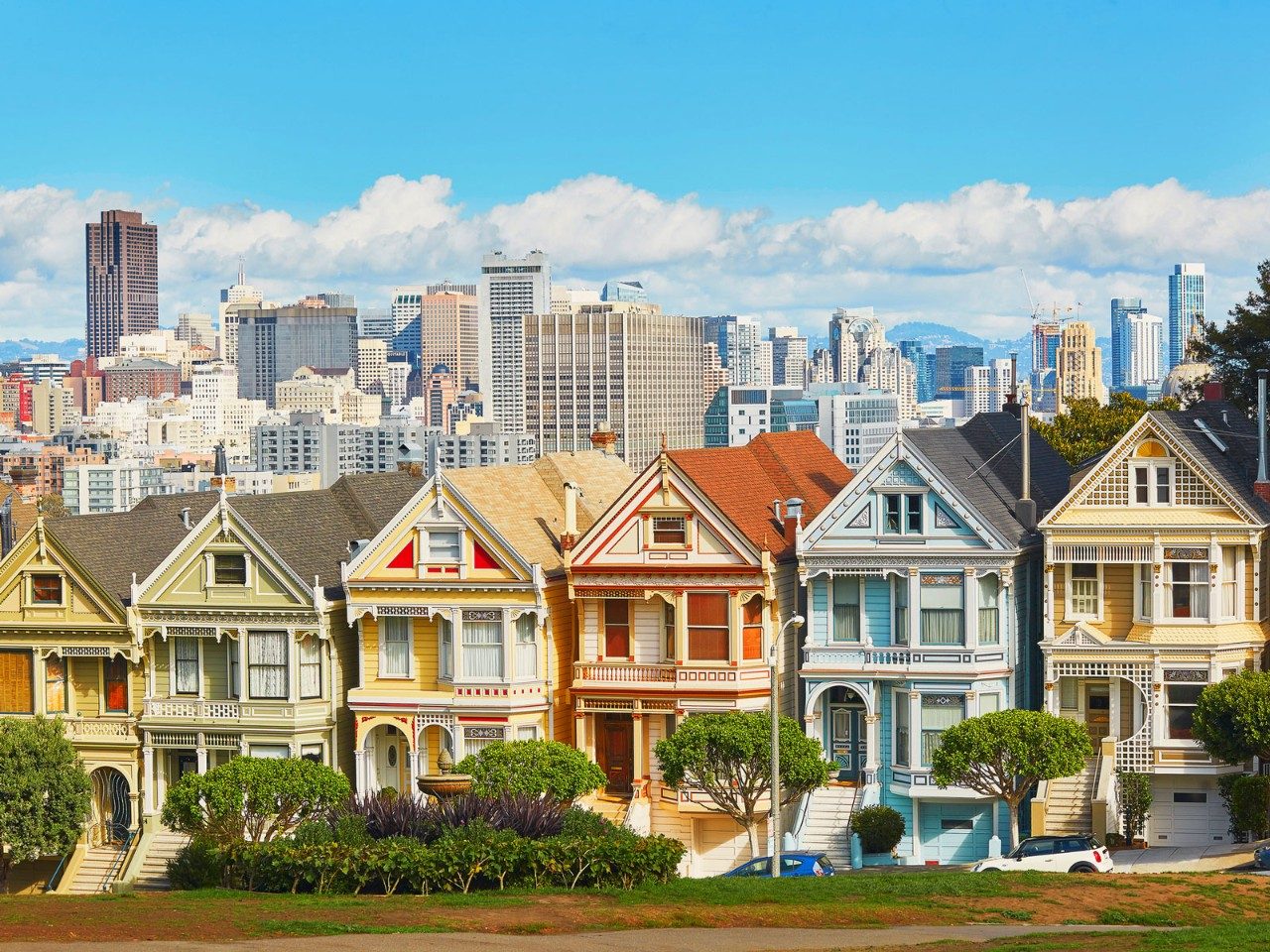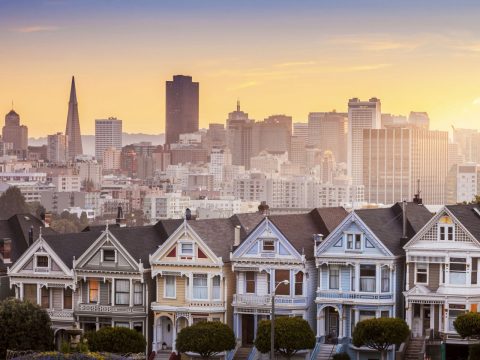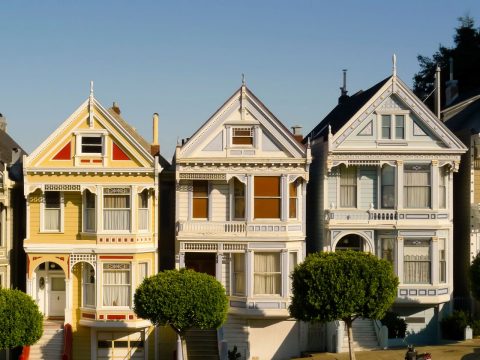Read Before You Leave – San Francisco

San Francisco landmarks are instantly recognisable – the fog-steeped Golden Gate Bridge and the cable cars traversing the infamously steep streets feature in the opening credits of sitcom Full House and countless movies, from the Mark Zuckerberg story The Social Network to the classic Harold and Maude. The Californian city was once known for the Summer of Love and its progressive counterculture movements. But now it’s associated with internet giants Facebook and Google and start-up wannabes flock there, with a song in their hearts and an app idea in their minds. For visitors, San Francisco is a dream: beautiful, easily navigable, with world-class food and cultural attractions. It’s a walking city, its neighbourhoods calling for exploration on foot, but remember: a short, 15-minute walk becomes a very different beast when your calves are battling one of the city’s many hills. Oh, and locals would prefer if you didn’t call it Frisco. Just don’t. We’ve got more pearls of wisdom for San Francisco – read on for what you need to know before you arrive.
Flight time
Qantas flies direct to San Francisco from Sydney in just under 14 hours.
Entering the US
Australia is a participant in America’s Visa Waiver Program, meaning Australians don’t need a visa for visits of 90 days or less. We must, however, obtain an Electronic System for Travel Authorization (ESTA) through the Department of Homeland Security site. Authorisation is usually granted on the spot but it’s advisable to apply at least 72 hours before you travel in case there’s an issue. ESTA-approved travellers also need a (machine-readable) ePassport.
If you overstay, the American Government could arrest, deport or even bar you from returning to the States. Your kids will never forgive you if they can’t go to Alcatraz.
Flying in to San Francisco International Airport
San Francisco International Airport is located in San Bruno, about 21 kilometres from downtown San Francisco. It’s a 20-minute cab ride (depending on traffic), but just as easy – and cheaper – is BART, a train connecting the airport with San Francisco’s neighbourhoods.
Vaccine advice
While there aren’t any specific vaccines recommended for travel to the US, it’s worth checking the US Centers for Disease Control and Prevention for updates on infectious-disease outbreaks. It’s also wise to ensure all your vaccinations are up to date.
Transport tips
Don’t bother with a car in San Francisco – when you’re not walking, there are cable cars, streetcars (trams), subways and buses run by Muni (San Francisco Municipal) to get you where you’re going. And don’t forget former start-ups such as Lyft and Uber. There are Visitor Passports that provide unlimited rides on Muni transport; a one-day pass costs US$24. A single ride on a Muni bus or train is US$2.50 with a Clipper Card, which you can buy at ticket office and machines around the city and top up as you go.
Money matters
At the time of writing, the Australian dollar was buying around 67 US cents – check a reliable currency conversion service for up-to-date foreign-exchange rates.
Check with your bank that you won’t be hit with extra fees when using your credit card in San Francisco. Your Australian bank and American ATMs will each charge you for withdrawing money from your debit card, too, so it might be worth organising a travel card (most banks have one) with low or no fees to use while you’re away.
In any case, inform your bank of your travel plans, lest overseas purchases are misconstrued as fraud and your card is cancelled.
Finally, tipping in the US is such a complex ritual that we have addressed the etiquette here.
Weather wise
San Francisco is famously cool and fog-prone. Thanks to the cool currents of the Pacific Ocean, the city experiences cool, dry summers and mild winters. There are average highs of just 20 degrees in summer, and in winter the average high is around 14 degrees. Its hilly topography means that the weather can vary wildly from neighbourhood to neighbourhood; if it’s foggy and cold in the Marina, it could just as likely be sunny and warm in South Beach.
When to go
Spring and autumn are great times to visit San Francisco. Believe it or not, in the autumn months from September to November the weather is warmer than the summer, and in spring there’s less rain and fewer tourists than at other times of year.
Dress code
Layering is key for San Francisco, enabling you to add and remove garments as necessary. Make sure you have a warm, windproof jacket, a backpack for carrying all those layers you’ll shed and then don again, and a pair of comfy, closed-toe shoes for walking. The city is populated by tons of millennial entrepreneurial types and it’s where Levi Strauss created his first pair of jeans, so casual denim is going to come in handy, too.
Tap water
The tap water is high quality in San Francisco; it comes from “pristine snowmelt” in the Hetch Hetchy Reservoir in Yosemite National Park. BYO drink bottle and refill it at the various tap stations located around the city.
Driving
According to the Australian Government’s Smart Traveller website, thieves target rental cars in the US. If you’re planning to hit the road in a rental, don’t leave any valuables behind when you park. According to research cited by Smart Traveller, drivers are almost twice as likely to be killed in a road accident in the US than at home. Remember, you’ll be driving on the right-hand side of the road.
Insurance policy
Without comprehensive travel insurance, travellers will pay through the nose for medical treatment in the US. Smart Traveller advises that a visit to the GP for a sore throat, say, will run up a bill in the hundreds of dollars – and this is before any extras such as blood tests or medication.
Where to stay in San Francisco
The whole city is a food mecca, but SoMA, an acronym for South of Market, is the area for up-and-coming restaurants. It’s a former industrial area, which means there are plenty of trendy converted warehouses and more start-ups and hipster bars than you can poke a stick at. Nearby Union Square is a top option for keen shoppers and people-watchers, and it’s where many of San Francisco’s hotels are located - though at night time things can get noisy if you value your sleep. The Mission District, famed for its ethnic diversity (think Mexican bakeries, excellent Asian street-food and artisanal ice-cream), is all activist bookstores, street art and corner bodegas with a vibrant street-life, especially around beloved Dolores Park. Try an Airbnb to get a real feel for the area. Nob Hill is the place San Francisco’s tech entrepreneurs go when they’ve really made it: think Victorian mansions and spectacular views. It’s also home to loads of chic bars and topnotch restaurants.
Phone calls and mobile data
Before you land, disable data roaming and don’t answer incoming calls on your mobile phone if you want to keep your monthly bill in check. Invest in a prepaid travel SIM card if keeping in touch with home is important.
If you need to make calls in San Francisco, buy a US SIM card for local calls and mobile data. Remember, this will only work if your phone is not locked to your Australian carrier. Also note that Australian mobile phones operate on a GSM network. In America, both GSM and CDMA networks are in operation. This means that your Australian handset won’t work on a CDMA network such as Verizon. See WhistleOut for more in-depth information on using your mobile phone overseas.
Consider buying a cheap handset from one of the US’s many big-box stores, such as Walmart. It will come with credit preloaded but keep in mind that in America you’re charged not just for making calls and sending texts but also receiving them.
Phone home
To call Australia, dial +61 followed by the phone number – including the area code minus the zero. So, to call a Sydney landline telephone, you would dial +61 2 then the phone number. To call a mobile phone, use the same country code and dial the mobile number minus the first zero.
Gadgets
Power sockets in the US (120V) have a lower voltage than those in Australia (230V) and a higher frequency (60Hz compared with Australia’s 50Hz). Most gadgets are designed to work on a range of frequencies and voltages but double-check if you’re in doubt. Power plugs and sockets also have a different configuration so an adaptor will come in handy.
Handy apps and websites
Municipal Transport Agency for planning your route on public transport.
Lyft or Uber for when public transport just won’t do.
Smart Traveller for safety information.
XE for currency conversion
San Francisco International Airport for information on flights, weather, traffic, parking, terminal locations and airport shuttles.
DoStuff for a rundown on the latest concerts, parties and events, compiled by locals.
Roaming Hunger shows on an interactive map the whereabouts of San Francisco’s many excellent food trucks.
SEE ALSO: The Rooftop Bars to be Seen on in San Francisco
Turn on, tune in and drop out with our run-down of top reads, watches and podcasts to inspire your San Fran trip.
Read
When Armistead Maupin began his quintessentially San Franciscan Tales of the City series, Arnold Schwarzenegger was still a bodybuilder and Steve Jobs was working out of a garage. The first of nine novels about the lives and times of the inhabitants of Mrs Madrigal’s Barbary Lane boarding house came out in 1978 and the last in 2014. Along the way, the series drew in millions of devoted fans who recognised themselves in the gay, straight, innocent, wild, shallow and wise characters.
Also consider…
The Joy Luck Club (1989): The resonant themes of mothers and daughters, particularly the gulfs and bridges between them, made Amy Tan’s debut book about Chinese-American families living in San Francisco (which the author describes as interlinked short stories rather than a novel) into an international bestseller.
Listen
The 1967 Monterey Pop Festival took Otis Redding from R’n’B up-and-comer to true soul star. Living on a houseboat near the Golden Gate Bridge shortly afterwards, he started to write (Sittin’ on) the Dock of the Bay. Redding completed the song, named one of Rolling Stone’s greatest of all time, with guitarist Steve Cropper but did not live to see its enduring success.
Also consider…
Original Motion Picture Soundtrack (1958): The atmosphere of Alfred Hitchcock’s San Francisco-set noir mystery is heightened immeasurably by composer Bernard Herrmann’s score, with its frantic, jagged strings and eerie romanticism.
San Francisco Days (1993): If there’s such a thing as sunny melancholy, Chris Isaak captures it on the title track of his fourth album, a plea to the lost love he can’t forget.
Watch
Maybe it’s the title. It’s hard to think of any other reason why 1972’s “What’s Up, Doc?” flies under the radar of so many movie lovers. Barbra Streisand has never been more appealing than she is in this film, playing opposite Ryan O’Neal’s adorkable, absent-minded professor. Director Peter Bogdanovich’s brilliant take on classic screwball comedy also has an excellent supporting cast and the best “car” chase ever shot in San Francisco (yes, including 1968’s Bullitt). Watch it somewhere your guffaws won’t disturb others.
Also consider…
Milk (2008): The struggle for LGBTQI rights is a huge part of the city’s story and Harvey Milk was one of its major figures. Sean Penn won an Academy Award for his remarkable portrayal of the community-organiser-turned-elected-official, assassinated along with the then mayor, George Moscone, in 1978.

Start planning
SEE ALSO: 14 Amazing Things You Can Only Do in San Francisco




